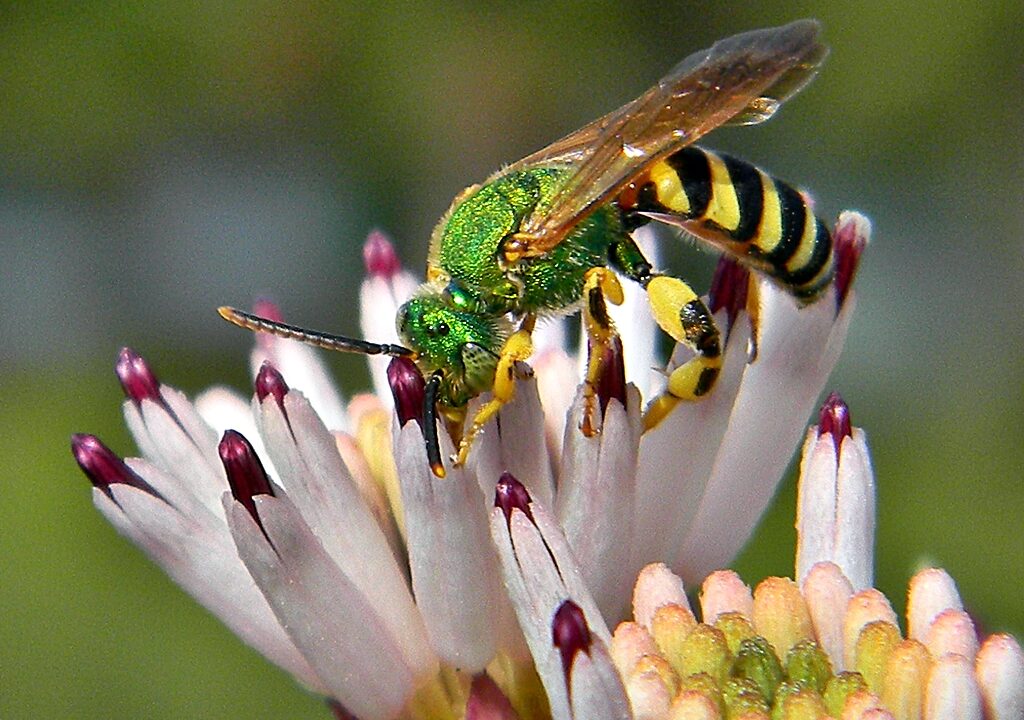Imagine stepping into your garden on a warm Florida morning and catching a flash of emerald brilliance darting between your flowers. What you’ve witnessed isn’t a tiny jewel that’s come to life, but one of nature’s most stunning pollinators – the metallic green sweat bee. These remarkable insects, with their mirror-like green bodies that seem to capture and reflect every ray of sunlight, are among the most overlooked heroes of Florida’s ecosystem. While most people can name a honeybee or bumblebee, few realize that these shimmering natives are working tirelessly in their backyards, ensuring that flowers bloom and vegetables grow. Their story is one of evolution, adaptation, and an intricate dance with the plants they’ve co-evolved alongside for millions of years.
The Science Behind the Shimmer
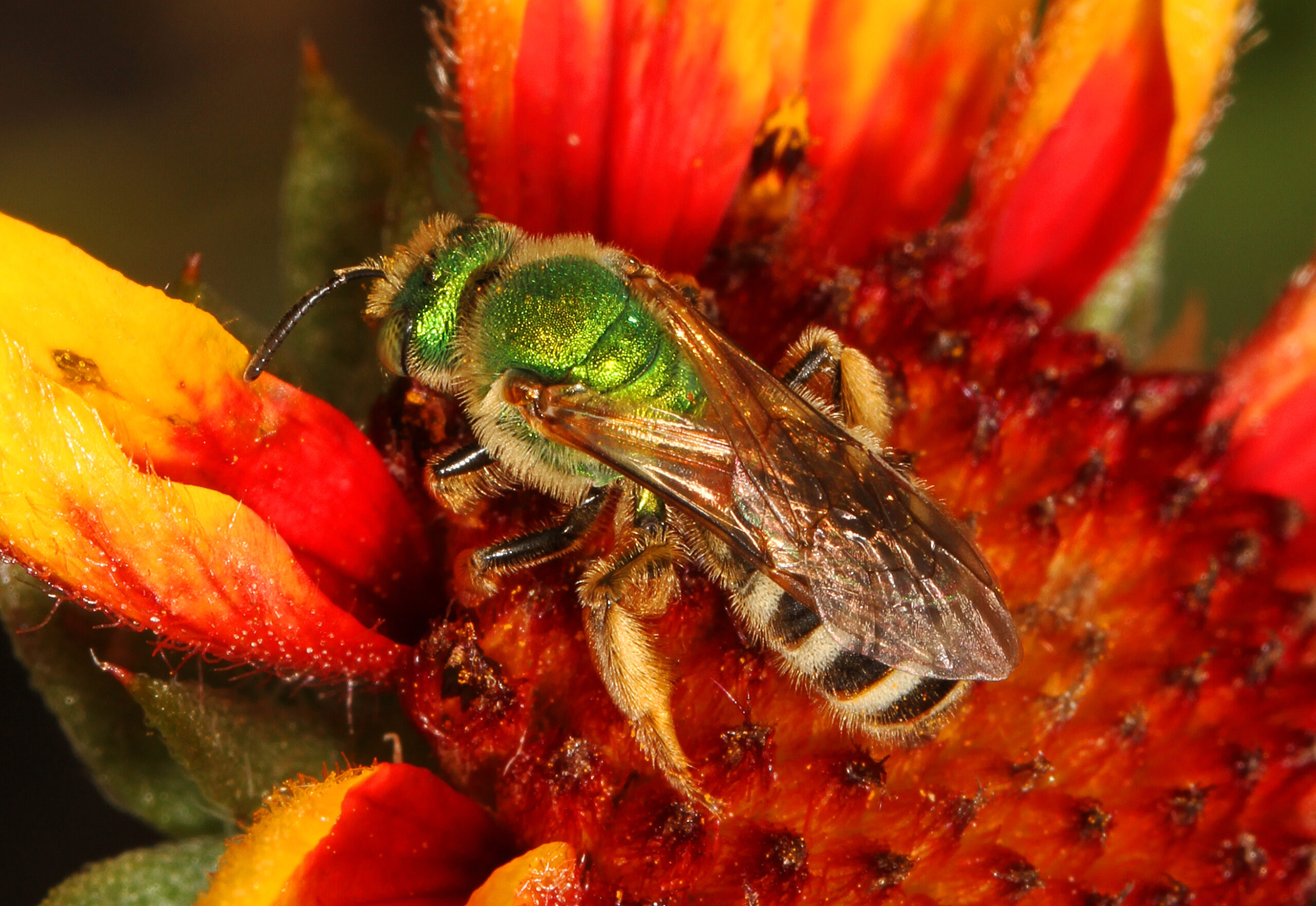
The metallic green sweat bee’s dazzling appearance isn’t just for show – it’s the result of millions of years of evolutionary engineering. Their bodies contain microscopic structures called platelets that reflect light in specific wavelengths, creating that signature emerald gleam that catches your eye from across the garden. This iridescence serves multiple purposes beyond mere beauty, acting as a form of species recognition and potentially helping with temperature regulation in Florida’s intense heat.
The scientific name Augochlora pura literally translates to “pure golden-green,” though these bees display a spectrum of metallic hues ranging from brilliant emerald to deep forest green with hints of blue. Unlike pigment-based coloration, their metallic sheen is structural, meaning it changes slightly depending on the angle of light and your viewing perspective. This creates an almost magical quality as they move through gardens, appearing to flicker between different shades of green like living gemstones.
Distinguishing Features That Set Them Apart
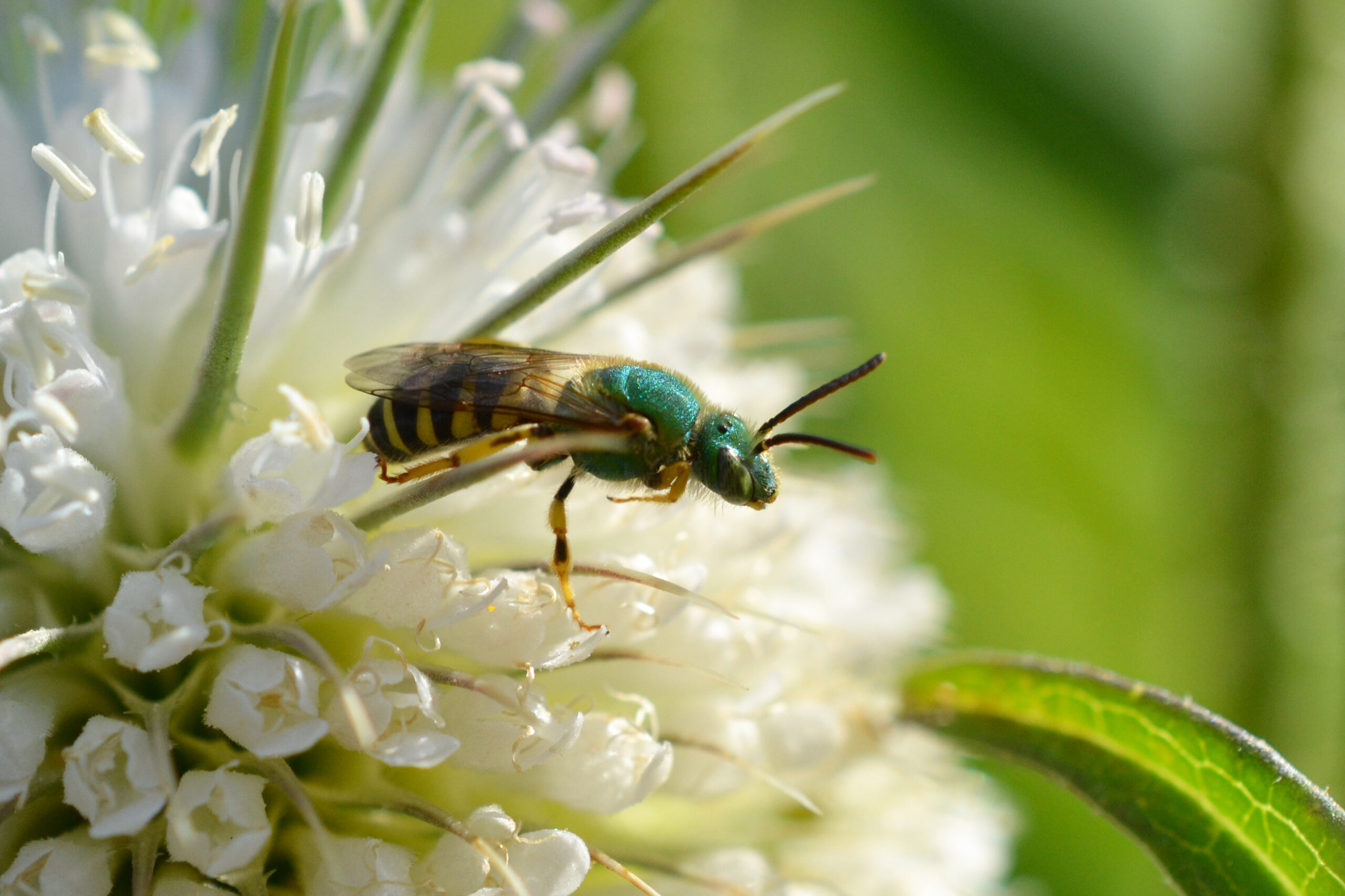
At first glance, you might mistake a metallic green sweat bee for a small fly or even a metallic beetle, but several key features mark them as true bees. Their bodies measure between 8-10 millimeters in length, making them significantly smaller than the familiar honeybee. Their legs are equipped with specialized pollen-collecting structures called scopae, though these are less prominent than the obvious pollen baskets you’d see on a honeybee’s hind legs.
Their heads are proportionally large for their body size, housing compound eyes that give them excellent vision for navigating between flowers. Unlike many other bee species, both males and females display the same stunning metallic coloration, though males are typically slightly smaller and have longer antennae. The females can be distinguished by their more robust build and the presence of stingers, though they’re remarkably docile creatures.
Their wings are transparent with a slight smoky tint, and when they’re at rest, these wings fold neatly along their backs, allowing their metallic bodies to catch the light unobstructed. This creates those moments when they seem to glow against the green backdrop of leaves and stems.
Where to Find These Garden Gems
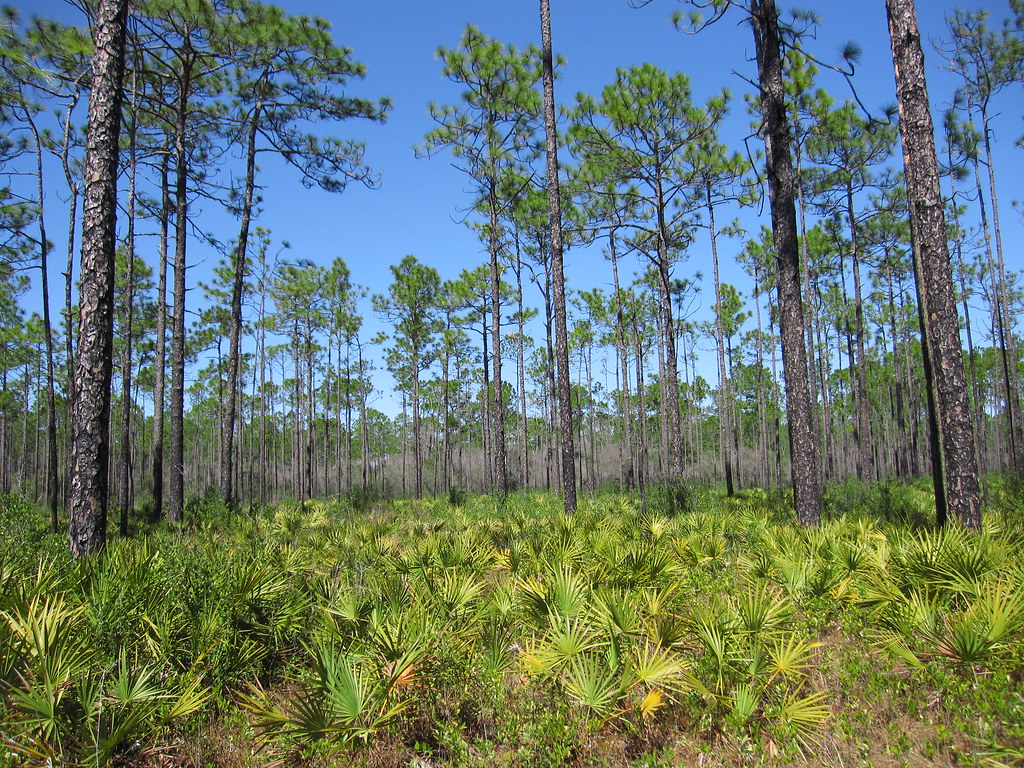
Florida’s metallic green sweat bees have carved out specific niches across the state’s diverse ecosystems, thriving in environments that offer both nesting sites and abundant floral resources. You’ll most commonly encounter them in residential gardens, particularly those with native plants, but they’re equally at home in natural areas like pine flatwoods, scrublands, and the edges of hammocks. Their adaptability to human-modified landscapes makes them frequent visitors to parks, botanical gardens, and even urban balcony gardens.
These bees show a strong preference for areas with exposed soil or sandy patches where they can excavate their underground nests. This makes Florida’s naturally sandy soils particularly appealing to them, and you might notice small holes in bare patches of your garden where females have been busy digging. They’re also drawn to areas with morning sun exposure, as they need to warm their bodies after cool nights to become active.
Unlike some specialist bees that only visit certain types of flowers, metallic green sweat bees are generalists, making them adaptable to various habitats across Florida’s climate zones. From the subtropical conditions of South Florida to the more temperate regions in the north, these resilient insects have established populations wherever suitable flowers and nesting sites exist.
Nesting Behaviors and Life Underground
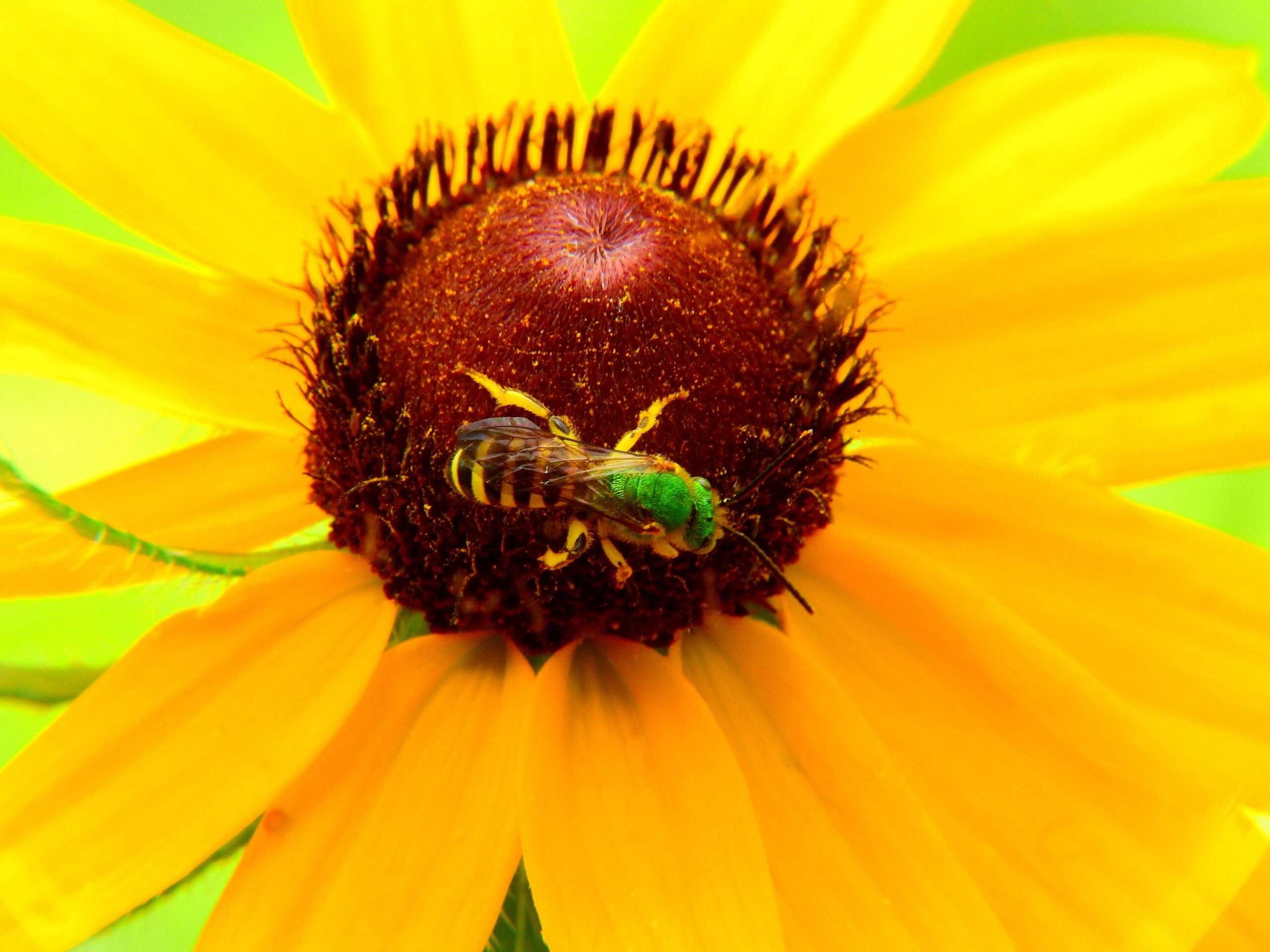
The underground world of metallic green sweat bees reveals a fascinating story of maternal dedication and architectural skill. Female bees begin their nesting activities in early spring, using their strong mandibles to excavate tunnels in well-drained soil. These tunnels can extend 6-12 inches deep, with multiple chambers branching off from the main shaft like rooms in an underground apartment complex.
Each chamber serves as a nursery for a single developing bee, carefully provisioned by the mother with a ball of pollen and nectar that will sustain the larva through its development. The female makes numerous foraging trips to gather enough protein-rich pollen for each egg, demonstrating the critical connection between healthy flower populations and successful bee reproduction. She shapes the pollen into a perfect sphere, lays a single egg on top, and seals the chamber before moving on to prepare the next one.
What makes their nesting behavior particularly interesting is their semi-social nature. While not as organized as honeybees, female metallic green sweat bees sometimes share nest entrances, with multiple females using the same tunnel system while maintaining separate brood chambers. This behavior suggests a level of social tolerance that’s uncommon among solitary bee species and may provide benefits like shared defense against predators and parasites.
The Pollination Powerhouse

Despite their small size, metallic green sweat bees punch well above their weight when it comes to pollination services. Their bodies are perfectly designed for collecting pollen, with branched hairs that trap pollen grains as they move from flower to flower. Unlike honeybees that focus on nectar collection, these native bees are primarily pollen gatherers, making contact with more flower parts and achieving higher rates of pollen transfer per visit.
Research has shown that native bees like the metallic green sweat bee can be up to three times more efficient at pollinating certain plants compared to managed honeybees. This efficiency comes from their foraging behavior – they visit flowers more frequently, spend more time on each bloom, and their smaller size allows them to access flowers that larger bees might struggle with. For crops like tomatoes, peppers, and eggplants, this type of thorough pollination is essential for fruit development.
Their role becomes even more critical when you consider that they’re active during different times and weather conditions than other pollinators. While honeybees might stay in their hives during cooler or slightly overcast days, metallic green sweat bees continue foraging, ensuring that pollination services continue even when conditions aren’t perfect. This resilience makes them invaluable insurance policies for both wild plant reproduction and agricultural systems.
Seasonal Activity Patterns

The life cycle of Florida’s metallic green sweat bees is intricately timed with the state’s flowering seasons, creating a natural rhythm that has evolved over countless generations. Their activity begins in earnest during late winter and early spring when temperatures consistently reach the mid-60s Fahrenheit, coinciding with the blooming of many native plants and early garden flowers. This timing isn’t coincidental – it represents millions of years of co-evolution between bees and plants.
Peak activity occurs during the warm months from March through October, when both temperature and flower availability are optimal. During this period, you might observe multiple generations of bees, with new adults emerging every 6-8 weeks throughout the active season. The overlapping generations create a steady presence in gardens, ensuring continuous pollination services during the critical growing season for most plants.
As winter approaches and temperatures drop, adult activity slows dramatically. However, unlike many temperate bee species that have distinct overwintering strategies, Florida’s milder climate allows some individuals to remain active year-round, especially in the southern parts of the state. During cooler months, they become opportunistic foragers, taking advantage of warm days and any available blooms to continue their essential work.
Favorite Flowers and Plant Partnerships
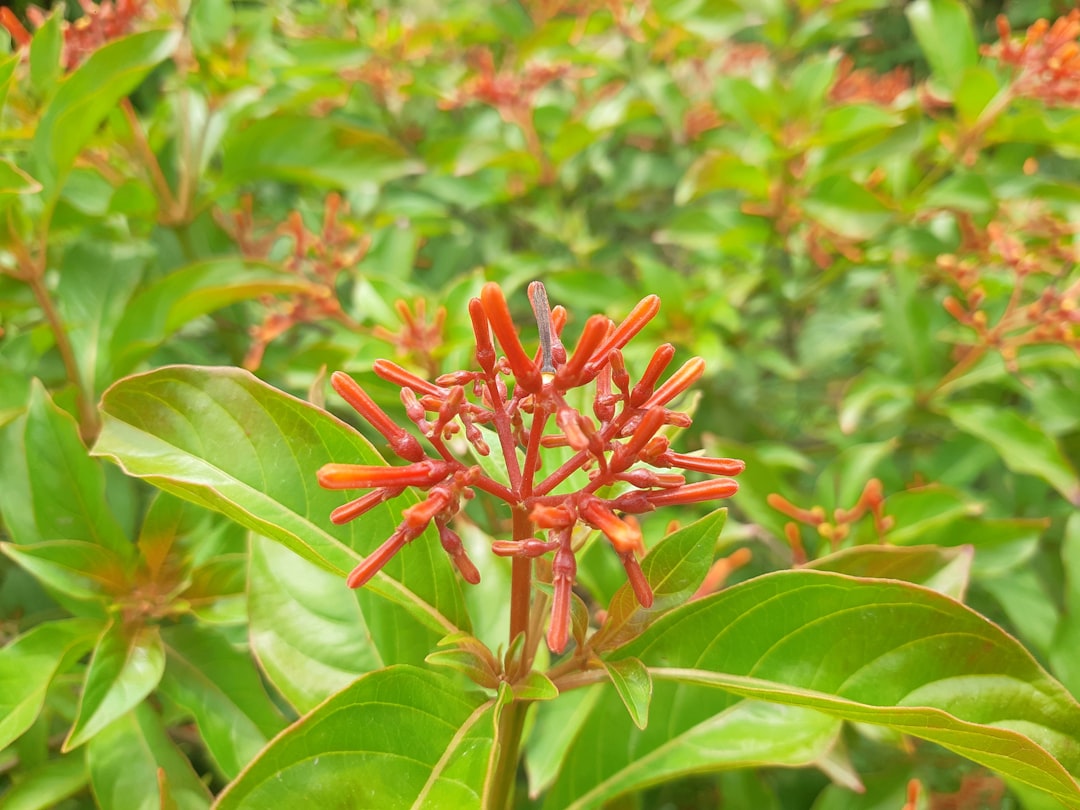
Metallic green sweat bees demonstrate sophisticated flower preferences that reflect both their physical capabilities and nutritional needs. They show particular enthusiasm for flowers with shallow corollas and easily accessible pollen, making them frequent visitors to plants in the daisy family like Spanish needles, goldenrod, and native sunflowers. These relationships represent evolutionary partnerships where both the bee and plant benefit – the bee receives high-quality food while the plant achieves efficient cross-pollination.
Native Florida plants hold special appeal for these bees, having co-evolved together over millennia. Firebush, with its small tubular flowers, provides both nectar and pollen throughout much of the year, making it a cornerstone species in pollinator gardens. Wild coffee, beauty berry, and native mints also rank high on their preferred species list, offering the diverse nutrition these bees need for successful reproduction.
Interestingly, they also adapt well to non-native garden plants, showing flexibility that has helped them thrive in human-modified landscapes. Herbs like basil, oregano, and thyme become magnets for these bees when allowed to flower, while ornamental plants like pentas and salvia provide reliable food sources throughout the growing season. This adaptability makes them valuable allies for gardeners growing both native and exotic plants.
The Sweet Truth About “Sweat” Bees
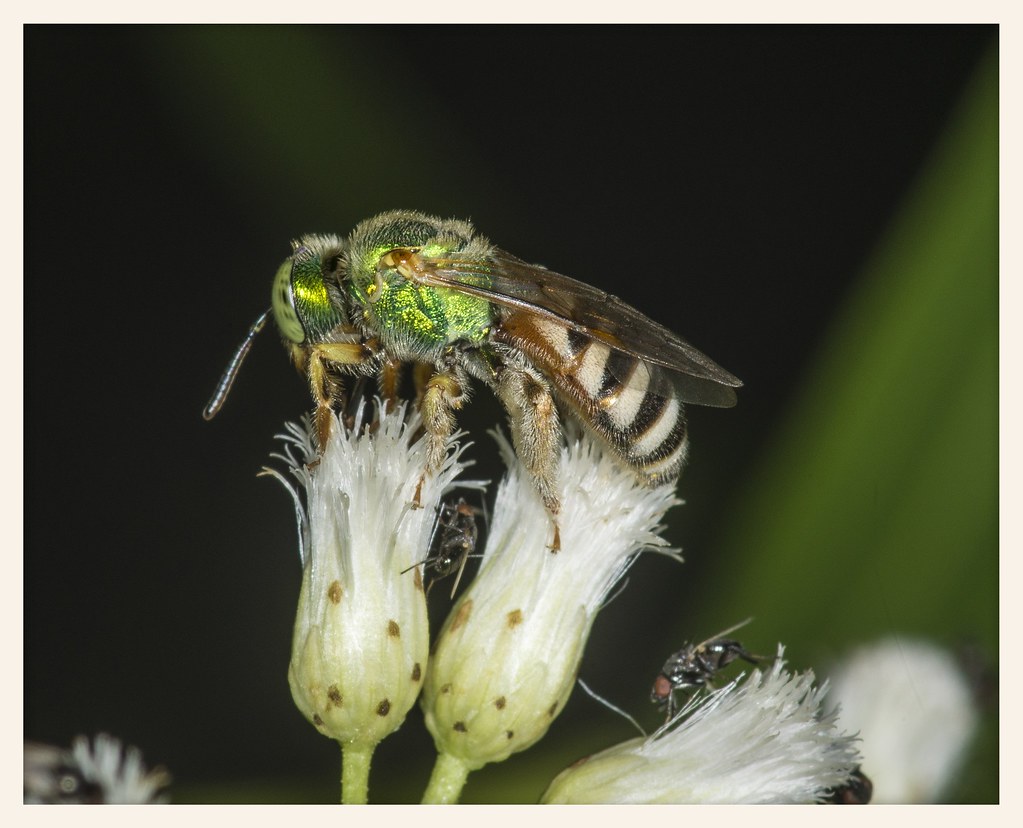
The common name “sweat bee” often creates misconceptions about these gentle pollinators, conjuring images of aggressive insects attracted to human perspiration. While it’s true that some sweat bee species are drawn to the salt in human sweat, Florida’s metallic green sweat bees are far more interested in flower nectar than in bothering people. Their attraction to salt is minimal and typically only occurs during extremely hot, dry conditions when natural mineral sources are scarce.
These bees are remarkably non-aggressive, with females possessing stingers that they rarely use except in cases of direct physical threat. Most people can garden alongside them without ever experiencing a sting, as the bees are focused entirely on their flower-visiting activities. When they do land on humans, it’s usually brief and accidental, quickly followed by their departure to more interesting floral destinations.
The “sweat bee” label unfortunately overshadows their more important identity as native pollinators and garden allies. Understanding their true nature helps gardeners appreciate these insects as beneficial visitors rather than potential nuisances, leading to better conservation outcomes and more bee-friendly gardening practices.
Threats and Conservation Challenges
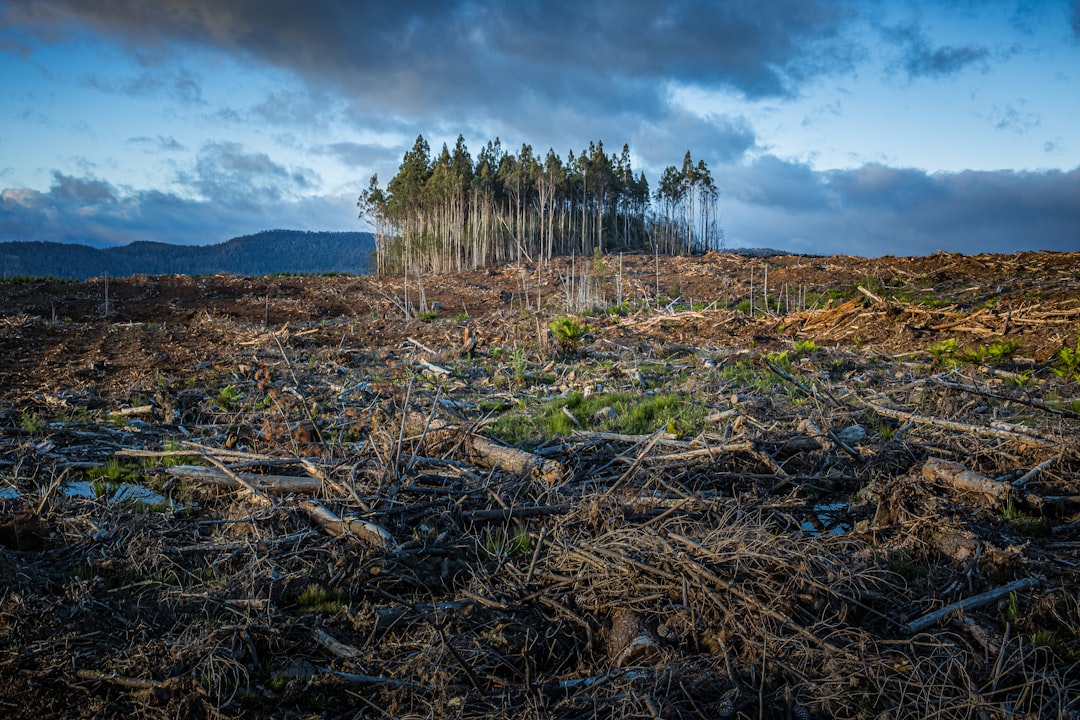
Florida’s metallic green sweat bees face mounting pressures from habitat loss, pesticide use, and climate change, challenges that mirror those confronting pollinators worldwide. Urban development continues to eliminate the sandy soils and diverse flower resources these bees need for successful reproduction. When natural areas are converted to lawns or hardscaping, the specialized nesting sites that have supported bee populations for generations simply disappear.
Pesticide use presents another significant threat, particularly systemic insecticides that persist in plant tissues and can be transferred to bees through contaminated pollen and nectar. Even products marketed as “bee-safe” can have sublethal effects that impair navigation, memory, and reproductive success. The widespread use of these chemicals in both agricultural and residential settings creates a landscape of chronic exposure that weakens bee populations over time.
Climate change adds another layer of complexity, potentially disrupting the carefully timed relationships between bees and their preferred plants. Shifting precipitation patterns, increased storm intensity, and rising temperatures all impact both bee survival and flower availability. Some researchers predict that changing conditions could force these specialized insects to shift their ranges or adapt their life cycles, processes that may not occur quickly enough to keep pace with rapid environmental changes.
Creating Bee-Friendly Gardens
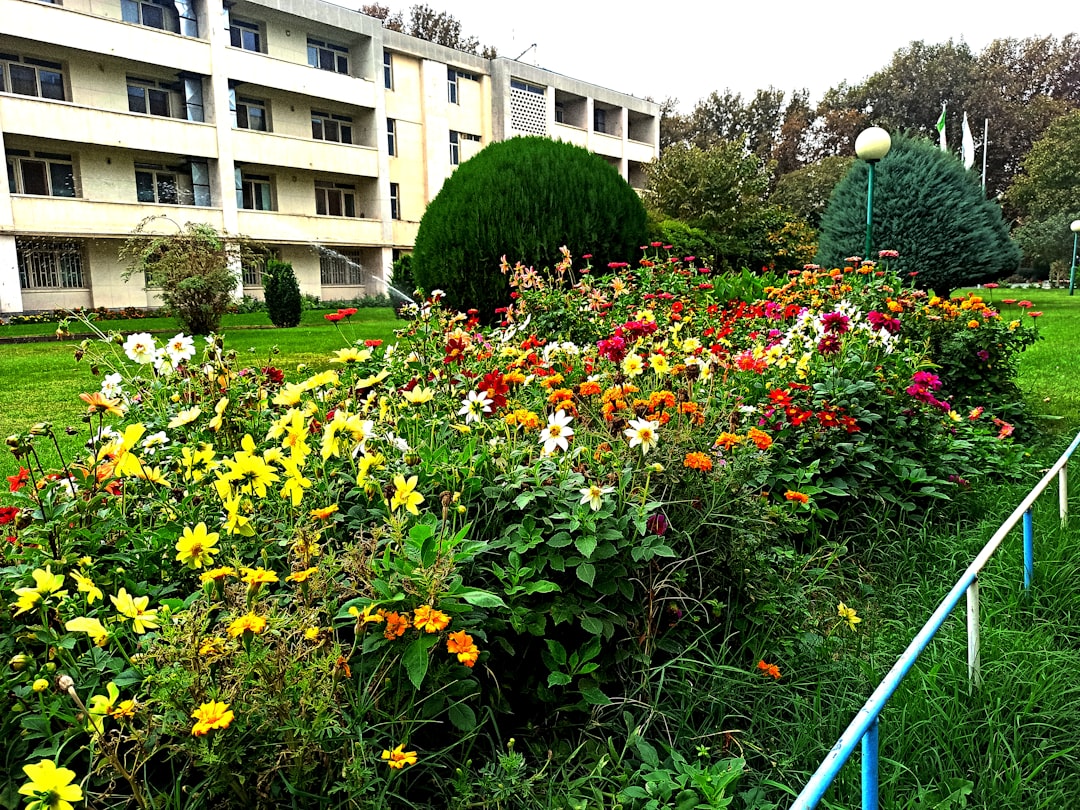
Transforming your outdoor space into a haven for metallic green sweat bees requires understanding their specific needs and preferences. The foundation of any bee-friendly garden is diverse, season-long bloom, ensuring that flowers are available from early spring through late fall. Native plants should form the backbone of these plantings, as they provide the most suitable nutrition and have co-evolved with local bee species over millions of years.
Soil management plays a crucial role in supporting ground-nesting bees like the metallic green sweat bee. Leaving some areas of bare, well-drained soil provides essential nesting sites, while avoiding heavy mulching in these zones prevents interference with their excavation activities. Consider creating a dedicated “bee bank” – a south-facing slope or raised bed with sandy soil that provides optimal nesting conditions.
Water sources become increasingly important during Florida’s hot, dry periods. Shallow dishes with landing spots, dripping faucets, or small fountains provide the moisture bees need while offering opportunities to observe these beautiful insects up close. Avoiding pesticides is absolutely critical, as even organic treatments can harm beneficial insects when applied during flowering periods or when bees are active.
Photography and Observation Tips
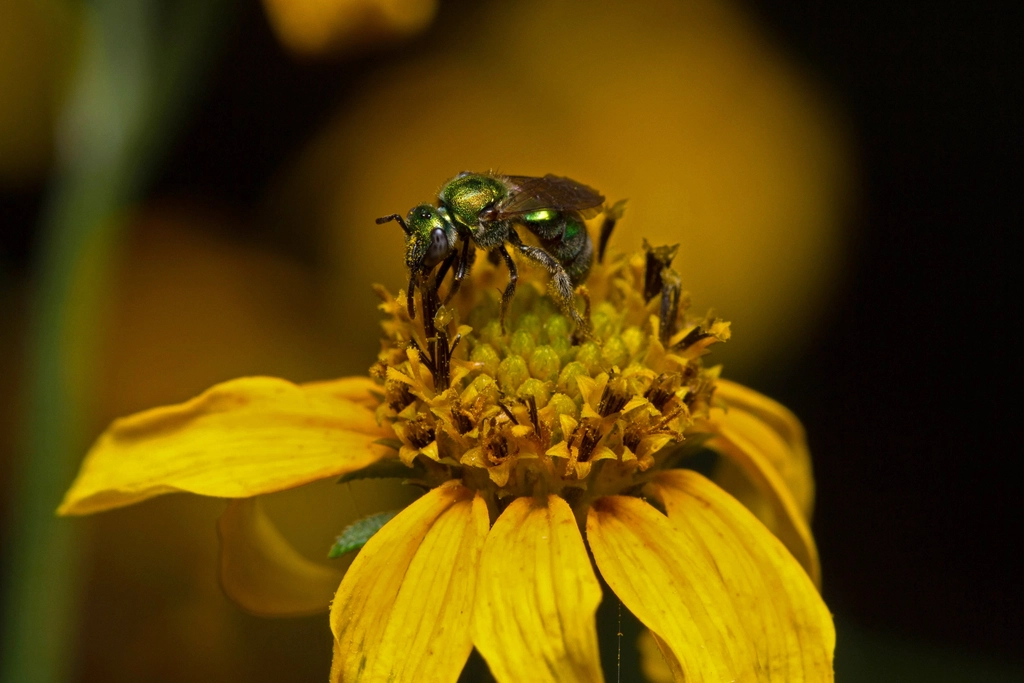
Capturing the ethereal beauty of metallic green sweat bees requires patience, the right equipment, and understanding of their behavior patterns. Early morning hours, typically between 8-10 AM, offer the best opportunities as bees are actively foraging and the angled sunlight enhances their metallic sheen. Their relatively small size means getting close-up shots requires macro lenses or extension tubes, but the stunning results make the investment worthwhile.
These bees are surprisingly tolerant of human presence, making them excellent subjects for beginning insect photographers. They tend to work methodically through flower clusters, giving observers time to position themselves and anticipate their movements. Look for individuals focusing intently on pollen collection – these bees are less likely to fly away and more likely to remain still long enough for detailed photography.
Behavioral observation reveals fascinating insights into their world. Watch for the characteristic way they use their legs to pack pollen onto their bodies, or notice how they seem to “taste” flowers with their antennae before committing to landing. During peak activity periods, you might observe multiple individuals working the same plant, providing opportunities to study their interactions and foraging strategies.
The Bigger Picture: Ecosystem Connections
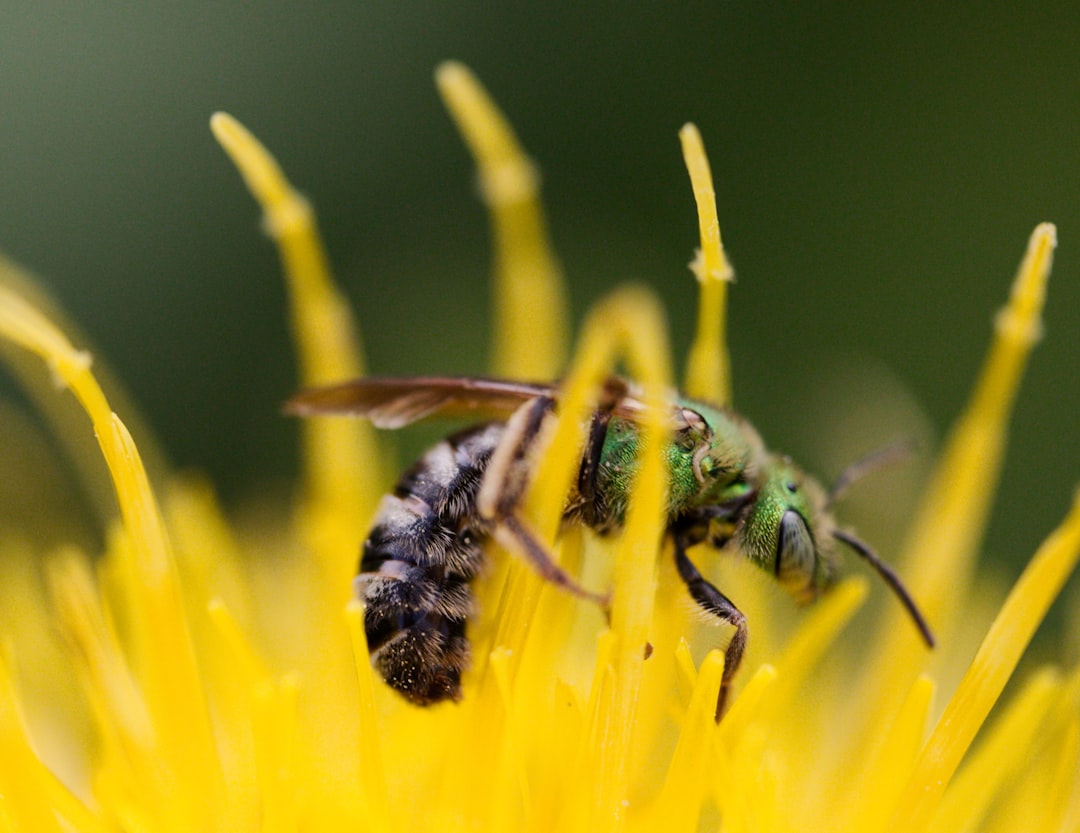
The metallic green sweat bee’s role extends far beyond simple flower visitation, connecting them to intricate webs of ecological relationships that support entire ecosystems. Their pollination services enable the reproduction of numerous plant species, which in turn provide food and habitat for countless other organisms. When these bees successfully pollinate native plants, they’re supporting the insects that feed on those plants, the birds that eat those insects, and the entire community of organisms that depend on healthy plant populations.
Their nesting activities also contribute to soil health and structure. The tunnels they excavate improve soil aeration and water infiltration, while their presence indicates healthy soil ecosystems free from excessive chemical contamination. Ground-nesting bees serve as important indicators of environmental health, with declining populations often signaling broader ecosystem problems.
The timing of their life cycles synchronizes with broader ecological rhythms, from bird migration patterns to the flowering schedules of critical plant species. This interconnectedness means that supporting metallic green sweat bee populations helps maintain the stability and resilience of entire ecological communities, making conservation efforts far more impactful than they might initially appear.
Research and Scientific Discoveries

Recent scientific research has revealed surprising aspects of metallic green sweat bee biology and behavior that challenge previous assumptions about solitary bee species. Studies using tiny radio transmitters have shown that these bees can forage up to 500 meters from their nests, much farther than previously thought, highlighting the importance of landscape-scale conservation approaches. This research demonstrates that even small garden patches can contribute to bee conservation when connected by corridors of suitable habitat.
Genetic studies have uncovered remarkable diversity within what was once thought to be a single species, suggesting that Florida may host several closely related metallic green sweat bee species with subtle differences in ecology and behavior. This discovery has implications for conservation strategies, as different species may require slightly different management approaches or have varying sensitivities to environmental changes.
Advances in high-speed photography and video analysis have revealed the mechanics of their pollination techniques, showing how their unique body hairs and foraging behaviors achieve such efficient pollen transfer. These insights are informing the development of bee-friendly agricultural practices and helping gardeners make more informed plant choices to support pollinator populations.
Future Outlook and Conservation Action
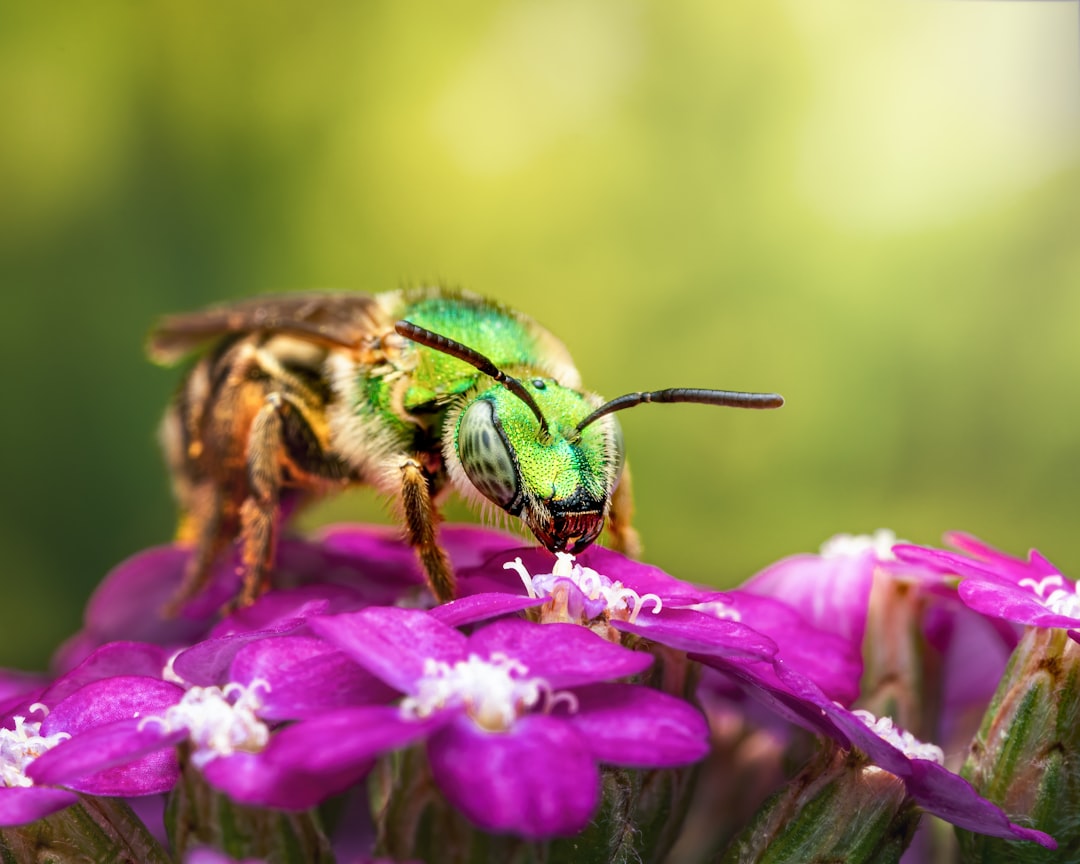
The future of Florida’s metallic green sweat bees depends largely on our collective commitment to creating and maintaining pollinator-friendly landscapes across the state. Current conservation efforts focus on habitat restoration, pesticide reduction, and public education, but success requires participation from everyone from large-scale land managers to individual homeowners. The good news is that these bees have shown remarkable adaptability to human-modified environments when their basic needs are met.
Climate change presents ongoing challenges, but research suggests that Florida’s diverse microclimates may provide refugia for bee populations as conditions shift. Urban heat islands, while generally problematic, might actually extend the active season for these warmth-loving insects in some areas. Understanding and managing these complex interactions will be crucial for long-term conservation success.
The growing awareness of native pollinators’ importance is driving policy changes at local and state levels, with new regulations protecting pollinator habitat and restricting pesticide use in sensitive areas. This momentum, combined with increasing public interest in sustainable gardening and biodiversity conservation, creates an optimistic outlook for these shimmering garden allies.
Taking Action for Garden Allies
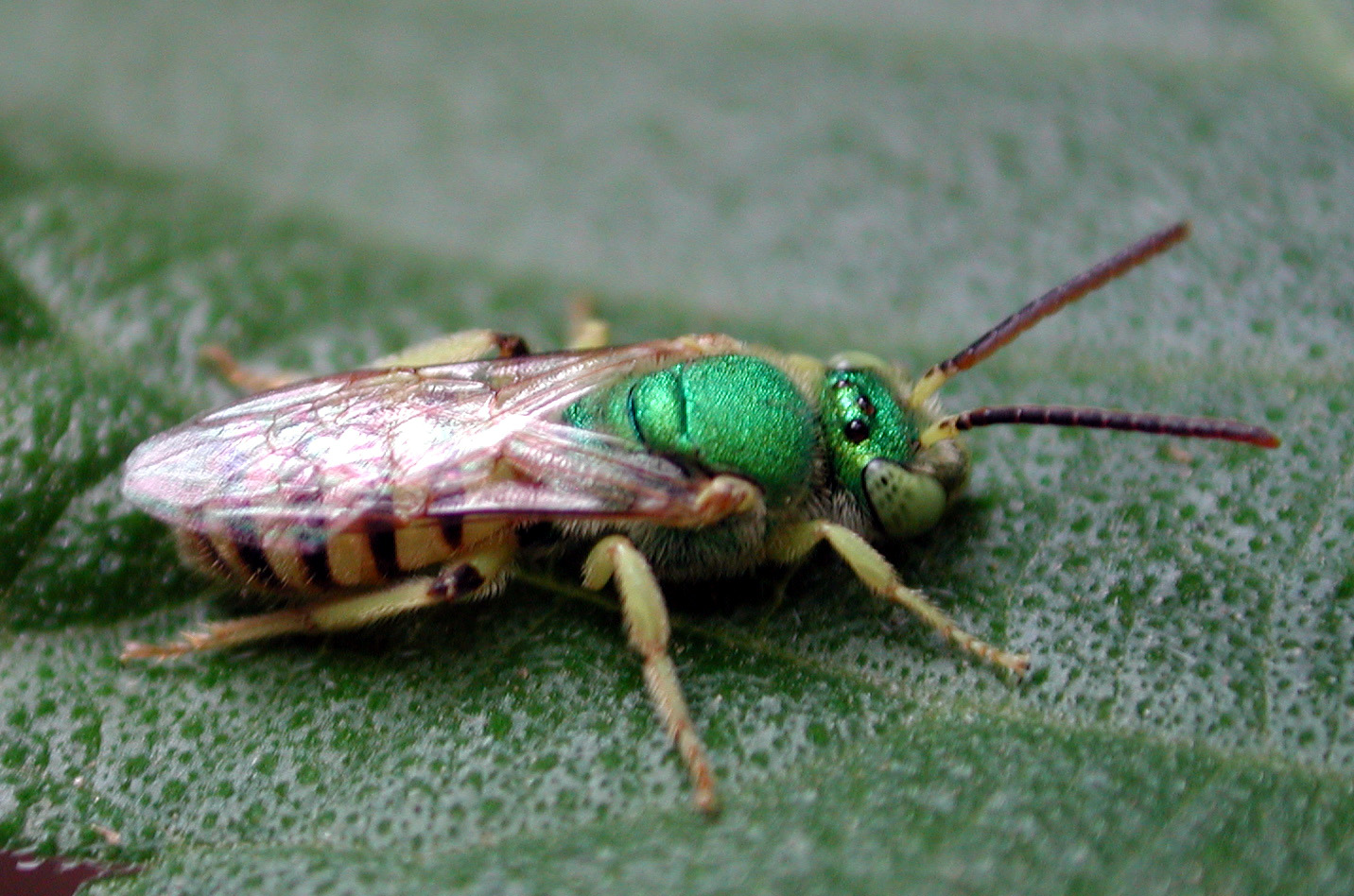
Florida’s metallic green sweat bees represent everything wonderful about native pollinators – they’re beautiful, efficient, gentle, and perfectly adapted to local conditions. Their shimmering presence in our gardens connects us to millions of years of evolutionary history while providing essential ecosystem services that support both wild plants and our food systems. These remarkable insects remind us that conservation doesn’t always require grand gestures or distant wilderness areas; sometimes the most impactful actions happen right in our own backyards.
Every native plant we add to our gardens, every patch of bare soil we leave for nesting, and every pesticide application we avoid contributes to the survival of these extraordinary creatures. The metallic flash of green darting between flowers serves as a living indicator of ecological health and our success as environmental stewards. By understanding and supporting these tiny allies, we’re investing in the resilience and beauty of Florida’s natural heritage for generations to come.
What small change could you make in your garden today to welcome these shimmering pollinators?

